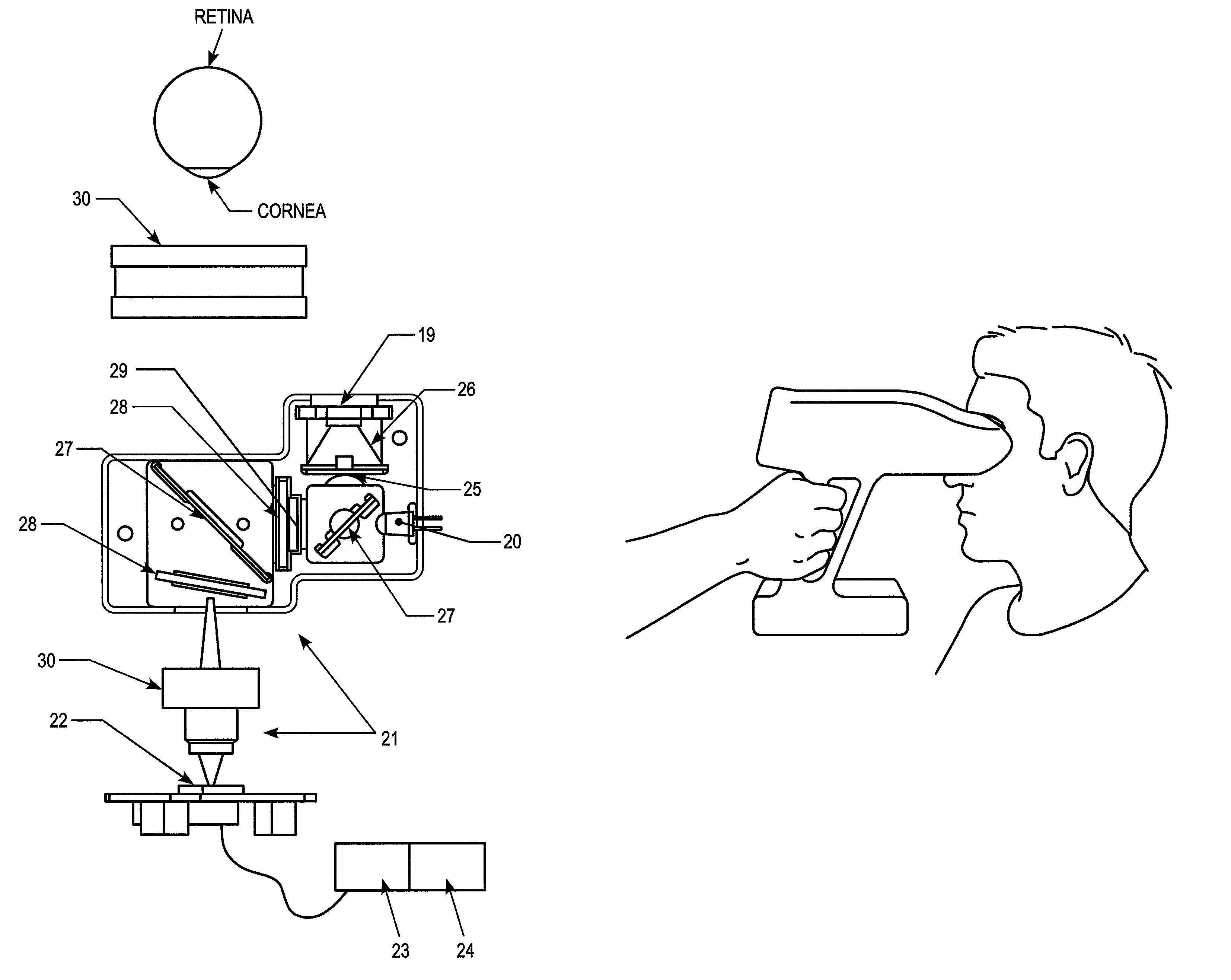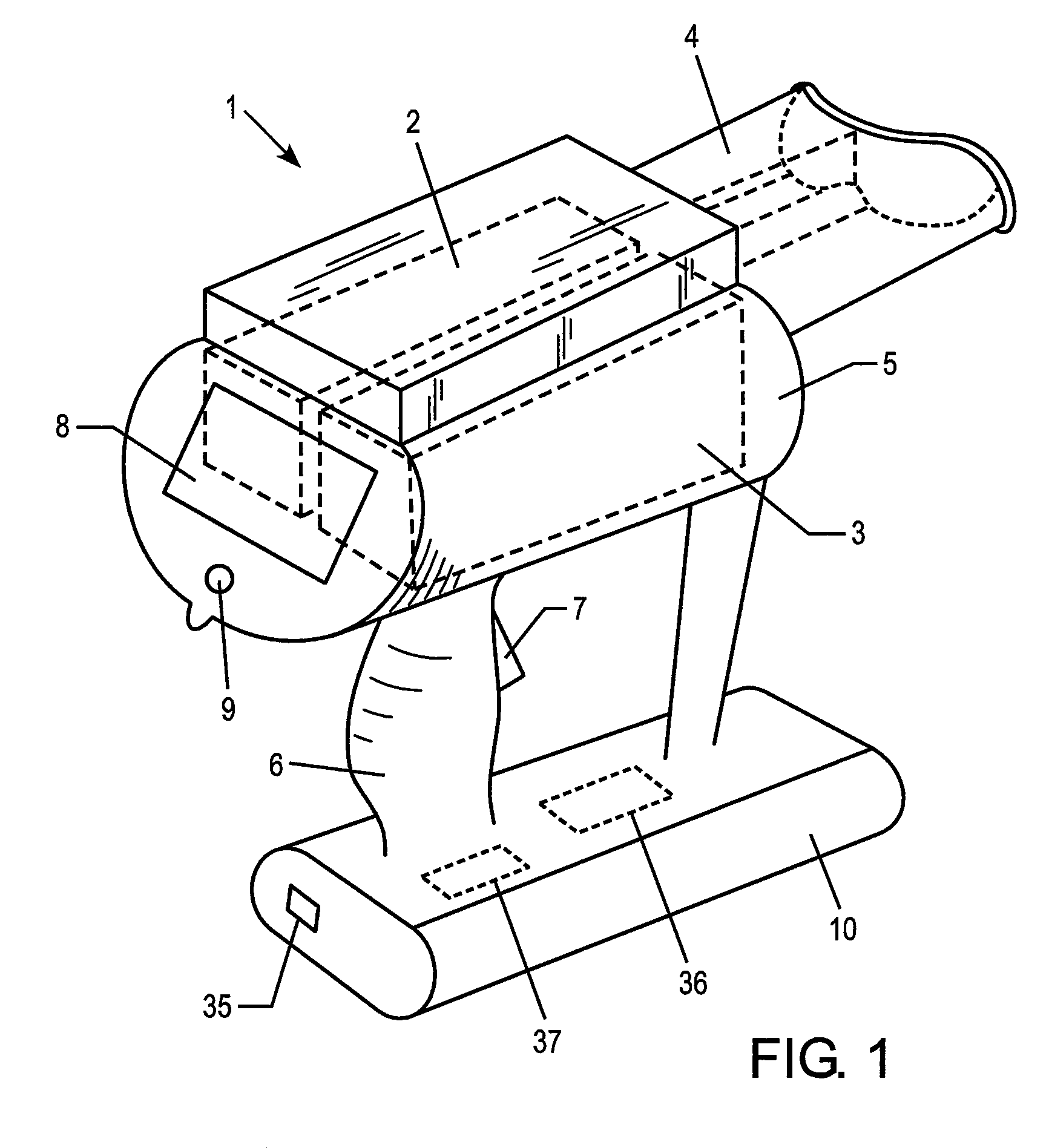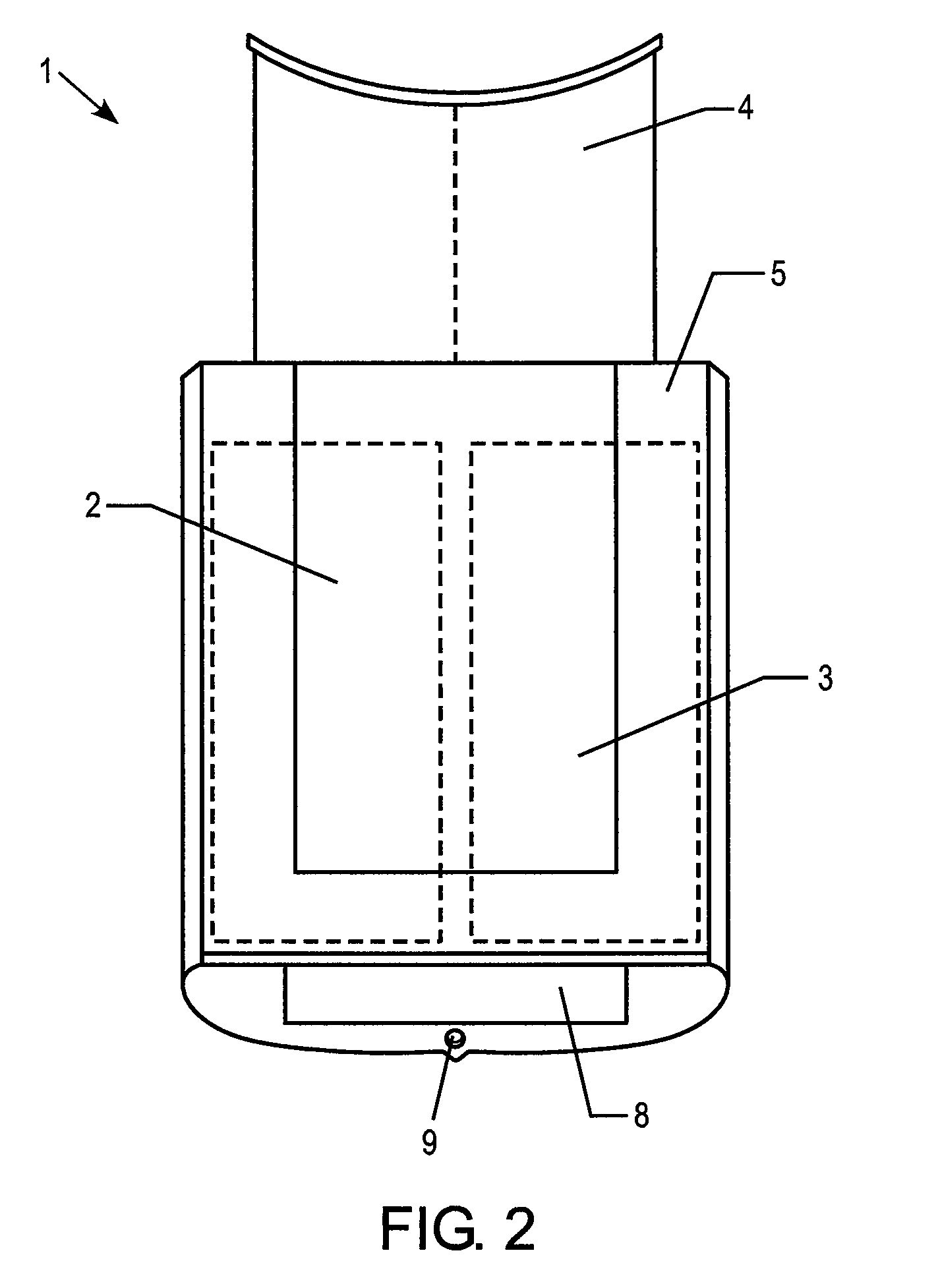Apparatus, methods and systems for non-invasive ocular assessment of neurological function
a neurological function and ocular assessment technology, applied in the field of ophthalmology, can solve the problems of lag time between eye examinations, significant drawbacks of traditional swinging flashlight tests, and difficulty in detecting the effect of ocular function, and achieve the effect of compact size and simple operation
- Summary
- Abstract
- Description
- Claims
- Application Information
AI Technical Summary
Benefits of technology
Problems solved by technology
Method used
Image
Examples
Embodiment Construction
[0040]FIGS. 1 and 2 illustrate an exemplary optical scanning apparatus 1 suitable for detecting and assessing various ophthalmologic biomarkers such as, for example, pupillary responsiveness and retinal imagery. The optical scanning apparatus may take images of the retina and / or the pupil. More specifically, FIGS. 1 and 2 show an apparatus 1 having one or more, but preferably two or more scanning modules 2, 3. The modules 2, 3 may be retinal scanning modules and / or a pupillary response scanning modules. As shown in FIGS. 1 and 2, apparatus 1 may include a subject-end orbital enclosure 4, which may be divided into two chambers, one for each eye, a housing or platform 5 for mounting the scanning modules 2, 3, a handle 6 with an external trigger-like switch or other activator 7 for initiating a scanning process, a liquid crystal or other display screen 8 for displaying resultant images and data, a control button, keypad, or other input mechanism 9, and a portable power source 10.
[0041]...
PUM
 Login to View More
Login to View More Abstract
Description
Claims
Application Information
 Login to View More
Login to View More - R&D
- Intellectual Property
- Life Sciences
- Materials
- Tech Scout
- Unparalleled Data Quality
- Higher Quality Content
- 60% Fewer Hallucinations
Browse by: Latest US Patents, China's latest patents, Technical Efficacy Thesaurus, Application Domain, Technology Topic, Popular Technical Reports.
© 2025 PatSnap. All rights reserved.Legal|Privacy policy|Modern Slavery Act Transparency Statement|Sitemap|About US| Contact US: help@patsnap.com



